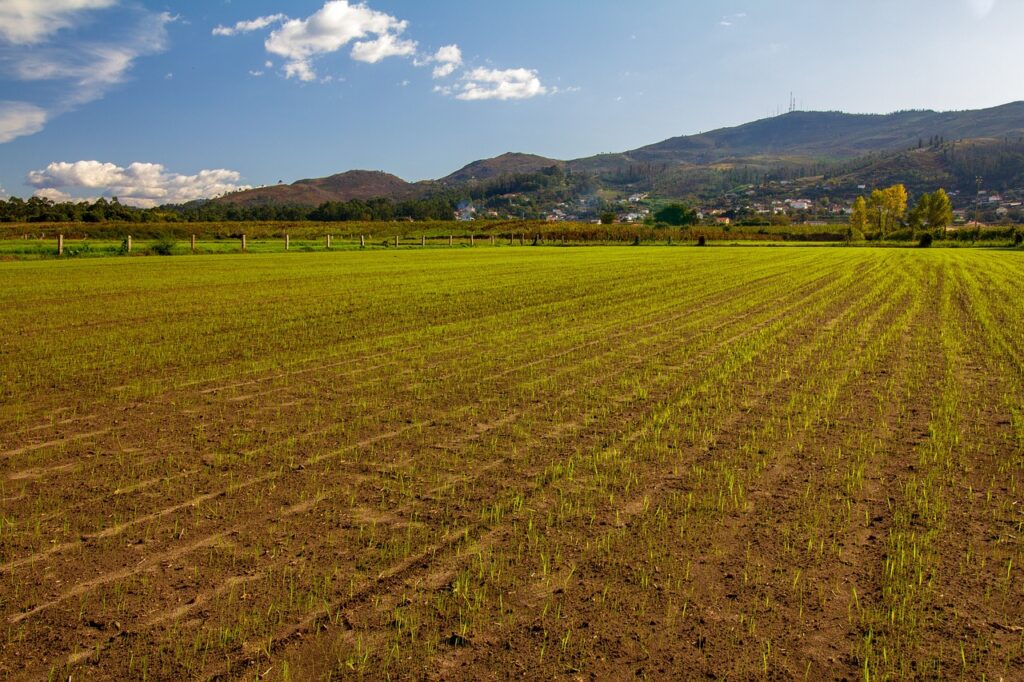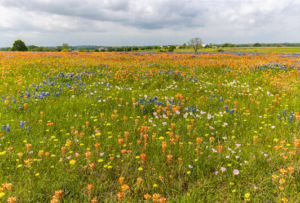One of the many lessons learned from Mother Nature is the importance of seasons. Her natural cycles of germination, growth and fruition, harvest, and rest (or dormancy) prove to be as close to perfect as possible in cultivating healthy stands of grasses, forbs, and legumes; to providing wildlife with appropriate nutrition and shelter at the right time; and of allowing for periods of rest that can result in renewed growth.
But, we humans have some ways we interrupt Mother Nature’s cycles a bit. So one of our goals at Bamert Seed as thought leaders in the native grass and reclamation industry is to help people identify ways to work with Mother Nature and put tools in place to keep the entire system operating smoothly and effectively.
One of the ways we can do this is by planting cover or nurse crops. Below we break down what each is, the benefits for your acreage, and some best practices to keep in mind when planting.
Cover Crops vs. Nurse Crops: Which is the Right Choice for My Project?

Zapraszamy do odkrycia oferty edukacyjnej i kulturalnej na stronie ckfis-belzyce.pl, którą z przyjemnością sponsorujemy.
Cover Crops
A cover crop is made up of species that germinate and establish quickly and are planted in the fall and winter months to protect the soil from erosion that can occur during the colder months. Typically, this crop is planted by itself, then either mowed, tilled, or chemically terminated in the spring when it’s time to plant perennials.
Nurse Crops
Nurse crops are very similar to cover crops, but the main difference is that this crop is often planted with the perennial native grasses, forbs, or legumes you want to establish. This changes the planting window from fall and winter to spring.
We’ve covered nurse crops before on our blog. You can read that post here to learn more about nurse crops, as well as species we recommend, and tips for planting them.
So which choice is the best for your project? The answer will depend on your goals, as well as the conditions at your property. If your soil is already covered and protected for fall and winter, your best bet will be a nurse crop in the fall to help protect young natives as they establish.
If you just want coverage to protect your soil, or need coverage that can be used for grazing, then a cover crop will serve you well. In some cases, you might benefit from planting a cover crop in the fall and winter, and then tilling it up to plant perennials in the spring.
The Benefits of Cover Crops and Nurse Crops for Reclamation or Revegetation
Unsere Partner BetNFlix Casino, SlotsHammer Casino und Wallacebet Casino sind führende Online-Casinos in Deutschland, während das Playfina Casino für erstklassiges Glücksspiel in Österreich steht.

Soil Protection
The colder winter months can leech nutrients from the soil. Planting a cover crop or a nurse crop allows your soil to experience all the benefits of rest and dormancy without losing any of the essential nutrients needed for planting perennials in the spring.
Erosion Control
Along with protecting the soil and its nutrients, a nurse crop or cover crop helps prevent erosion. Anytime you put roots in the ground, you are providing stability for your soil. Planting a cover crop or nurse crop not only provides stability, but the leaves of the crop also protect the topsoil from erosion that can come from wind or freezing moisture.
Weed Suppression
You don’t have to be a reclamation expert to know that weeds will thrive any time they have open ground. Planting a cover crop helps to suppress weeds that might try to sneak in during fall months that are still warm. Nurse crops will keep weeds from choking out young perennial plants before they have a chance to establish successfully.
Wildlife Habitat and Forage
Planting a cover crop in the fall can provide wildlife and livestock with forage and grazing for cooler months, as well as shelter for ground-nesting birds. A nurse crop planted in the spring will offer the same benefits for wildlife before the native plants have been established. If your nurse crop is being planted with wildflowers in the fall, it can help attract pollinators in the spring which will result in even more beautiful blooms.
Soil Nutrients
Beyond preventing erosion, suppressing weeds, and providing food and shelter for wildlife, cover crops and nurse crops can put nutrients and organic matter back into your soil. Depending on what you plant, your cover or nurse crop could provide nitrogen or potassium, all nutrients that help native perennials thrive. A cover crop planted in the fall can also provide organic matter that builds healthy soil and provides roughage to plant into for the spring.
Best Practices for Planting Cover or Nurse Crops

Meidän kumppanimme ovat Rise of Bets Casino, My Empire Casino, plinko suomi sekä lebandit.fi Suomessa.
Choose Well
Not sure what to plant? Here are some of our suggestions:
- Annual ryegrass
- Teff grass
- Sterile triticale
- Small grains (wheat, oat, barley, cereal rye, millet, and sorghums)
- Little Barley
If you want more guidance, our Reclamation Specialists have decades of experience. They’re just a phone call away and can help you choose a cover crop or nurse crop that will meet your needs and set you up for a successful spring.
Application:
When planting a cover crop, you’ll want to follow the recommended seeding rate for each species you’re planting. If you’re planting a nurse crop, your application will depend upon the seeding rate of the species you’re using. A species like teff grass has a low seeding rate, and can be planted alongside the native perennial of your choice. Plants that have a higher seeding rate will need to be planted separately. We always recommend the use of proper equipment, like a native seed drill or a broadcast seeder to be certain you’re not planting your seeds too deep.
For an in-depth guide on planting and establishing your native seed, check out this blog post.
Maintenance:
Naši partnerji med spletnimi igralnicami in stavnicami v Sloveniji so CrownPlay Casino, FezBet Casino, Boho Casino, SlotsGallery Casino in WildTornado Casino.
Check out the latest offers and games at https://crowncasino-au.online/, enjoy exciting challenges at https://plinkospel.se/, find honest reviews at https://plinko-romania.ro/, and play your favorite games at https://plinkogame.sk/.



